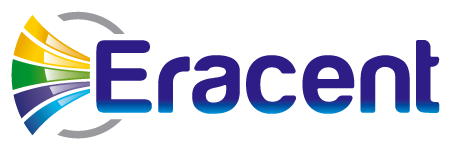Product End of Life Data
It’s no fun to get caught off guard and suddenly find out that your organization is running a software product or version that is no longer supported by the publisher. You have to scramble to identify every device where that product is installed and then quickly patch or upgrade those machines since they now pose an operational and security risk. This is not an uncommon scenario since it’s often difficult to get End-of-Life (EOL) and End-of-Support (EOS) data for hardware products and software applications.
The upcoming dates when a software or hardware product will no longer be sold or supported can be published (or not) in any manner that the vendor chooses. It may be in tech support emails, a PDF or support page on a website, or anywhere else. It’s up to you as the customer to notice these dates and act upon them.
The ideal scenario is to avoid last minute panic and have a proactive process for identifying upcoming EOL and EOS dates, planning your upgrades, and phasing out old products and versions in a controlled manner. IT-Pedia helps support this process by gathering and publishing EOL and EOS dates for thousands of products from an ever-growing number of vendors in a single database that is constantly updated. These dates are shared with asset repositories, SAM tools and CMDBs where they can be used as inputs for reports, alerts and process automation tasks.
Data Normalization
Any database application that is populated and updated via manual input as well as integrations with other systems can get messy very quickly. People enter vendor and product names any number of ways, critical details get omitted, and different discovery tools may report on the same products but use very different naming conventions. It’s a recipe for chaos.
Asset repositories, CMDBs, SAM tools, product and support catalogs, and procurement systems can all suffer from poor data quality, redundant entries, and other issues that can drastically impact their usefulness and the effectiveness of reporting results. IT-Pedia provides a normalized “master” data set that leverages common naming conventions that are provided by publishers and manufacturers. Product names and attributes are associated with manufacturer part numbers and SKUs, so you’ll know that systems and users are referencing the same products. When all of the systems in your ITAM and SAM ecosystem are speaking the same language, improvements in usability, productivity and efficiency are inevitable.
In conjunction with Eracent’s SCANMAN™ application recognition knowledgebase, IT-Pedia provides a complete, powerful data normalization solution.
Simplified Catalog and CMDB Creation and Enhancement
Detailed product records are the foundation of asset repositories, service catalogs, CMDBs, procurement systems and other operational management systems. Despite how essential this data is to any organization, product and asset details are often compiled haphazardly from multiple sources. If there is data that is necessary for reporting but it is not in the system, people waste time searching online or through vendor documents to find and add it, if they can even locate it. The data ends up being inconsistent and incomplete, so it’s not as effective as it could be and it lacks credibility since users can’t depend on the information that is presented.
IT-Pedia significantly reduces the time and effort required to create detailed product records in asset and service catalogs, or to expand the product details in an existing catalog. It eliminates the information gaps and inconsistencies that can be caused by incomplete purchase data or manual, iterative approaches to catalog creation.
IT-Pedia puts a wealth of complete vendor-supplied data at your fingertips, all in one place.
Hardware Infrastructure Planning
Even in the age of cloud architecture and hosted environments, most large enterprises still maintain a significant data center footprint.
In these dynamic environments, it’s important to look ahead at the organization’s computing requirements, its current and planned environments, and options to ensure that its needs are met, now and in the foreseeable future. This planning often includes projects around data center consolidations and moves, facility acquisition and improvements, and migrations to cloud infrastructure.
There are many attributes about hardware devices that are essential to know for these projects, but they are rarely included in procurement information and never captured by discovery tools. These include:
- Power utilization and “green” certifications
- Energy and cooling requirements
- Physical dimensions and weight, which can have a huge impact on floor space planning
- End-of-life details, which can impact decisions and timing around upgrades, refreshes, and replacement with other physical, virtual or cloud-based processors. Hardware that will soon be rendered obsolete can also pose an operational risk for incompatibility with applications and other interconnected devices.
IT-Pedia consolidates these critical attributes and other details about hardware devices of all classes – from servers to laptops to network equipment – into a single reliable source.



